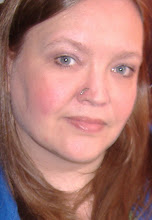
I have a little more time on my hands now, so I hope to blog a bit more for you all. I apologise for being quiet over the last couple of weeks!
As you may recall, I recently showed you a beautiful photograph taken by my friend Sally, who is British but also lives here, in Sodankylä. Her husband Thomas, works at the local Geophysical Observatory in Tähtelä, Sodankylä, which is literally less than a five minute drive from my home. Thomas, a Geophysicist is Head of the Aeronomy Unit and amongst other things, he studies and teaches about the Aurora Borealis.
http://www.sgo.fi
Although there was a research station operating in Sodankylä as early as 1882-1884, the Sodankylä Geophysical Observatory was not fully established until 1913. It is an impressive place, with a HUGE Eiscat radar dish as seen in the two images below! It performs continuous measurements of magnetic field, magnetic pulsations, cosmic radio noise, upper atmosphere radio soundings, ionospheric tomography, seismic recordings and cosmic rays. That is an outstanding list in my view!
 © Thomas Ulich
© Thomas Ulich © Thomas Ulich
© Thomas UlichAs Thomas says on his web pages " The Sodankylä Geophysical Observatory has a digital camera with a special lens which can see the whole sky from horizon to horizon. Whenever it is dark enough, it takes one picture of the night sky per minute. The image will tell you whether there are Northern Lights visible above Sodankylä. If you see the lights at the lower edge of the image, they are about 300 km south of Sodankylä, i.e. they are just above Oulu! Of course, it might be cloudy in Sodankylä but clear in Oulu -- or vice versa ".
I would add an image, to show you what it looks like, but all images from their site are under copywrite and I've not had time yet to request permission to add one. In the meantime their link is below - which you can view the nightly images from. With this almost live camera you can see lots of activity as it is happening (IF it is happening!) Which is great of course, if you can't afford to dash up here to view the Aurora Borealis in the flesh! :D If you refresh the image every minute or so, when there is activity, you can get some idea of just how beautiful, quick moving and truly unbelievable a good Auroral display can be!
http://www.sgo.fi/Data/RealTime/allsky.php
 © Thomas Ulich
© Thomas Ulich
Rainbow Aurora Arctic Fox Postcard
The Aurora Borealis, also known by many as the Northern Lights, is know by Finns as Revontulet. It stems from an ancient belief that the colours flying in the sky, were actually created by an Arctic Fox's tail sweeping across the snows in the far, far north and creating colourful sparks. There is an old, old word for Fox, now defunct, which is Repo, but in the Finnish language the P will change to a V, if there are other additions to the stem word. The N makes the word possessive as in Fox's and Tulet means Fires (in the plural form). The word for Fox these days, is however Kettu. I think that Revontulet is such an evocative and poetic word, I love it. I also love watching it and have been fortunate enough to do so on many occasions!
 © Thomas Ulich
© Thomas UlichSadly though, the real reason for the Aurora Borealis is nothing to do with the romanticism of a Fox's tail! The energy source of the Aurora is the Solar winds that are flowing past Earth, that arrive around 40 hours after leaving the Sun. It is drawn to the Earth's magnetic poles, hence why up here you get a good view of it! It is caused by charged particles hitting our atmosphere and being excited by the various gases, at the various levels of atmosphere/magnetosphere/ionosphere etc.. hence why there are different colours, each one caused by a different gas excitement! They might look like they are all together, but actually are higher up or lower down than another colour!
Contact with Oxygen or Nitrogen at different altitudes causes these colours:
Green Aurora - Oxygen, up to 150 miles
Red Aurora - Oxygen, above 150 miles
Blue Aurora - Nitrogen, up to 60 miles
Purple/Violet/Amethyst Aurora - Nitrogen, above 60 miles

This image shows the Earth's magnetic field stretched out due to the solar wind. When I see this it always reminds me of an Angel shape! Just like a spiritual energy protection!
Currently however, there are few Auroric displays to be seen, because there is little activity in the sun's spots.
 © Thomas Ulich
© Thomas UlichA recent article on the YLE website of Finland, (the equivalent of the BBC for Finns) indeed covered this matter albeit in brief and it said:
"There haven’t been many sightings of northern lights in Lapland this winter. According to the Sodankylä Geophysical Observatory, the scarcity of northern lights is due to very few sunspots. Tauno Turunen, director of the observatory, says the last time the sun was this passive was nearly 100 years ago, in 1913. He explains that the sun is active in cycles, but scientists can't predict how long these cycles last".
http://www.yle.fi/uutiset/news/2009/02/northern_lights_disappear_in_lapland_542932.html
 © Thomas Ulich
© Thomas UlichThomas himself, also has several other fascinating pages of interest!
http://cc.oulu.fi/~thu/Aurora/learnmore.html
http://cc.oulu.fi/~thu/Aurora/forecast.html
Visit here, to view more of his Auroral images!
http://cc.oulu.fi/~thu/NLPhotos/
You can also see two video's of the Aurora Borealis and get an idea of how it moves...as a photograph is one thing, but if you have never been lucky enough to witness one first hand, you don't generally realise how much it can move!
HERE and HERE
And finally, if you have a few minutes to spare.. do watch this short movie from an astronaut above Earth, who filmed the Aurora Borealis over Canada. Fantastic!
http://spaceflight.nasa.gov/gallery/video/station/expedition6/qtlow/exp6aurora1.mov







